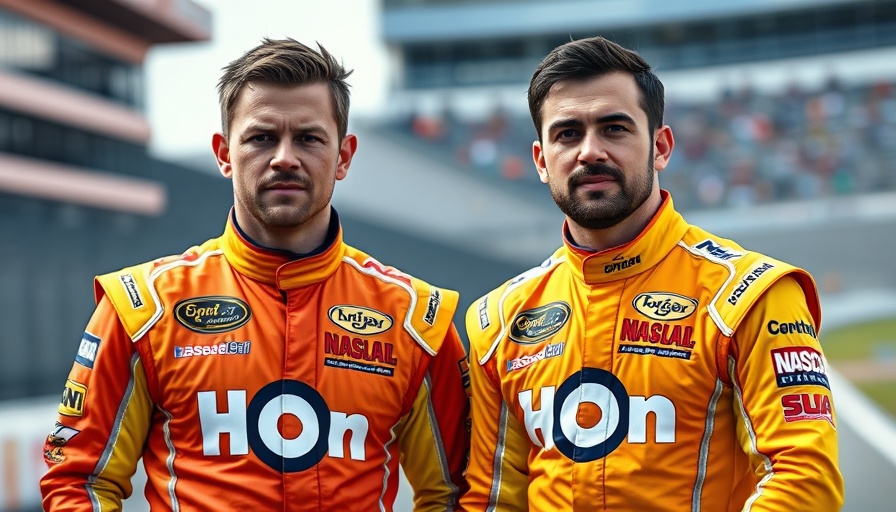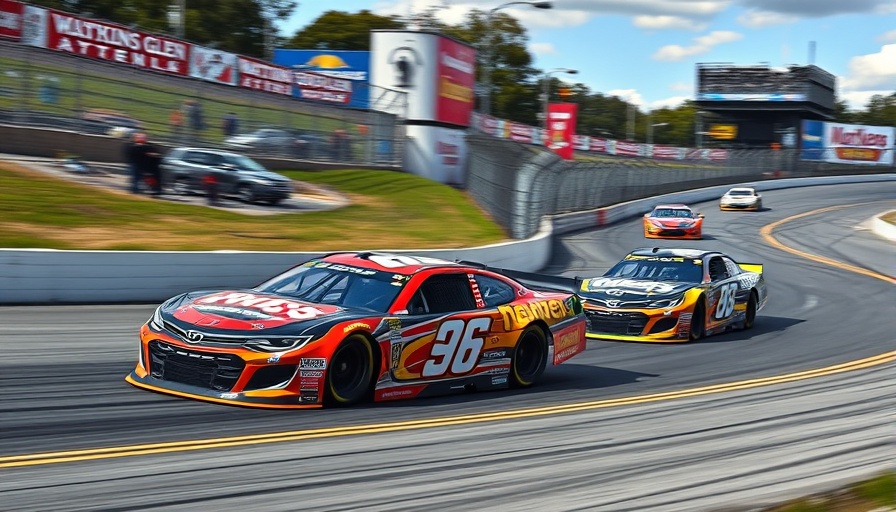
The Clash After the Checkered Flag: Understanding Racing Rivalries
The NASCAR race in Mexico City not only concluded with Shane Van Gisbergen taking the victory, but it also ignited a heated altercation between drivers Ricky Stenhouse Jr. and Carson Hocevar. Though such clashes are not uncommon in the world of motorsports, this particular episode raises questions about sportsmanship and competitive spirit in high-stakes environments.
A Closer Look at the Incident
Following the race, tempers flared as Stenhouse and Hocevar confronted each other, allegedly driven by a disagreement over a maneuver made during the race. Reports detailed how one driver’s actions on the track can ripple into personal interactions off the track, intensifying rivalries that might previously have seemed merely competitive.
The Driving Forces of Rivalries in NASCAR
Rivalries in racing have long been a staple of the sport. They contribute not only to the narrative but also boost viewer engagement at every event. This incident exemplifies how egos and competitive spirits often collide, making for dramatic storytelling that NASCAR fans love. Just like any sport, NASCAR is about more than just speed; it’s also about the personalities behind the helmets.
Historical Context: A Tradition of Feuds
The concept of rivalries is entrenched in NASCAR's history. From legends like Dale Earnhardt and Richard Petty to modern rivalries involving today’s drivers, friction is as much a part of racing as the roar of engines. How these rivalries evolve can impact the sport's image and its audience's loyalty. The Stenhouse-Hocevar encounter adds another chapter to this storied narrative.
What’s at Stake: The Business of NASCAR
While many might see the altercation as a mere spat between drivers, industry insiders recognize its potential implications on sponsorships, fan engagement, and media coverage. NASCAR thrives on such dynamics, and while fans love the intensity, sponsors often prefer a polished image. Striking the right balance between competition and conduct is critical for the sport’s commercial success.
Fans’ Reactions: The Social Dynamics of NASCAR
For fans, rivalries can heighten the excitement of race day. They turn the ordinary experience of watching cars drive in circles into an emotional rollercoaster, where allegiances are tested. Comment sections across social media platforms buzzed with opinions ranging from support to condemnation. The NASCAR community is passionate, and incidents like this one fuel spirited discussions among fans, fueling loyalty to their favorite drivers.
Future Implications: How Incidents Shape the Sport
Looking ahead, the Stenhouse-Hocevar confrontation may serve as a pivotal moment. Will this rivalry escalate, leading to more dramatic encounters, or will it simmer down as the racers focus on their performances? The answer could significantly influence the narratives crafted around upcoming races and the audience's investment in the drivers involved.
In Conclusion: Reflecting on Sportsmanship
As fans and followers of NASCAR, we must grapple with the blend of rivalry and sportsmanship that defines the sport. While intense competition is essential for excitement, how drivers handle conflict can also set crucial precedents for future races. Will Stenhouse and Hocevar emerge as bitter rivals or learn to coexist on the track? Only time will reveal the legacy of their clash in Mexico City.
As we continue to follow the NASCAR season, let's engage with these stories and understand their significance, not just for the sport but for us as fans.
 Add Row
Add Row  Add
Add 




Write A Comment